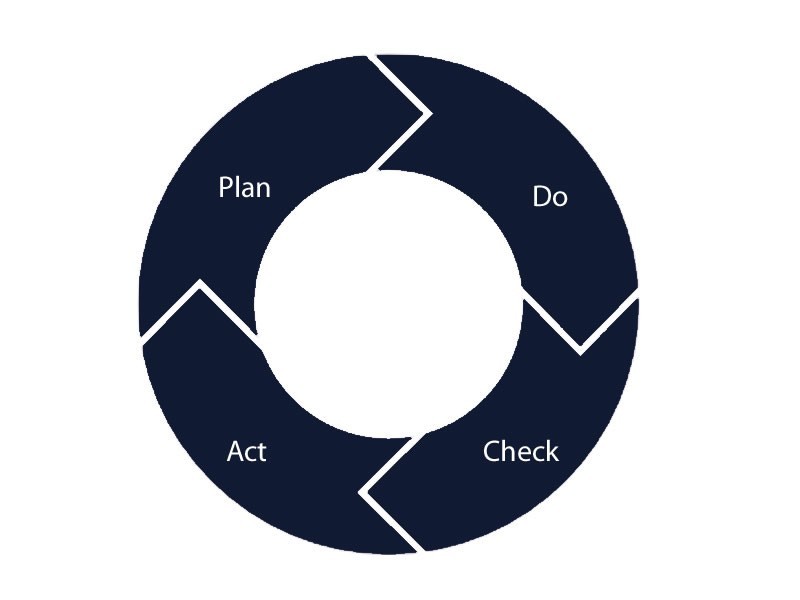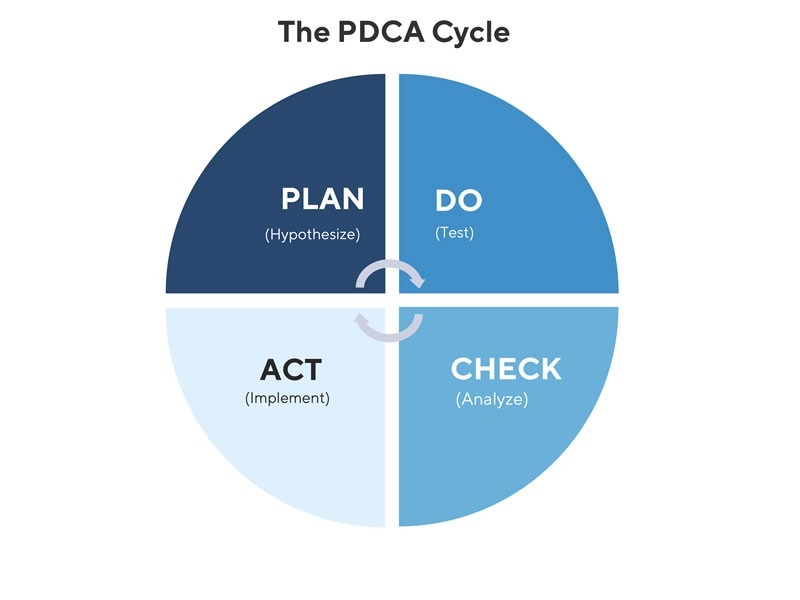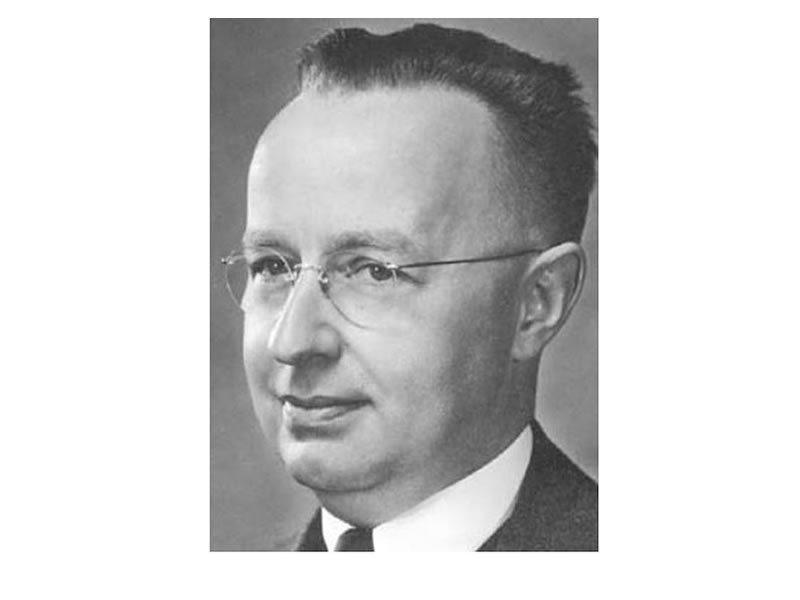Insight Blog
Agility’s perspectives on transforming the employee's experience throughout remote transformation using connected enterprise tools.
17 minutes reading time
(3318 words)
A Brief Primer On The Shewhart Cycle - Steps, Examples & More
Explore the essentials of the Shewhart Cycle, a key to continuous improvement in quality management.
The Shewhart Cycle, a foundational concept in the field of quality management, represents a systematic, iterative process designed to enhance and control quality in various organizational processes.
Initially developed by Dr. Walter Shewhart, a prominent figure in the field of quality control, this cycle emphasizes the importance of continuous improvement. It is particularly renowned for its straightforward, yet effective, approach to problem-solving and process optimization.
Applying the Shewhart cycle in a maintenance program can expedite continuous improvement and enable the company to enhance its processes and operations.
With consistent and accurate execution of each step, iterations occur more rapidly, leading to faster improvements.
By focusing on a cyclical process of planning, doing, checking, and acting (PDCA), the Shewhart Cycle offers organizations a structured methodology to achieve consistent and sustainable improvements in quality, efficiency, and overall performance.
What is Shewhart Cycle?
The Shewhart Cycle originated in the early 20th century, conceptualized by Walter A.
Shewhart, a statistician at Bell Laboratories. Shewhart's work focused on improving the quality of manufacturing processes through statistical methods. His cycle introduced a revolutionary approach to process control, emphasizing iterative improvement.
This methodology gained significant prominence and formed the basis of subsequent quality management theories, including the Deming Cycle.
- Plan: Identify opportunities and devise a strategy for change implementation. In a manufacturing context, this involves determining the operational issue that requires resolution or enhancement.
- Execute: Put the planned changes into action and assess their effectiveness. This stage involves implementing new ideas, methods, or process improvements, such as altering production processes, refining maintenance strategies, introducing training, or modifying work practices.
- Verify: Examine the test results, measure data, and analyze outcomes against the projected benchmarks outlined in the plan. Metrics like production output, machine availability, and safety statistics should be evaluated to understand the effectiveness of the implemented changes.
- Adjust: Take corrective actions based on insights gained from the test phase. If the change proves unsuccessful, repeat the cycle with a different plan. If successful, integrate the lessons learned into broader changes. The knowledge acquired from the test can contribute to ongoing improvements, initiating another iteration of the Shewhart cycle.
Its importance lies in its ability to transform organizations' approach to quality control, moving from reactive problem-solving to proactive quality improvement, thereby enhancing productivity, efficiency, and customer satisfaction in various industries.
Basic Principles of the Shewhart Cycle
The basic principles of the Shewhart Cycle revolve around four key stages: Plan, Do, Check, and Act (PDCA). The "Plan" stage involves identifying a problem or opportunity for improvement and developing a strategy to address it.
The "Do" stage is about implementing the plan on a small scale to test its effectiveness. In the "Check" stage, results are monitored and analyzed to determine if the plan is working as intended.
Finally, the "Act" stage involves taking actions based on the results – either standardizing the successful strategy for broader implementation or returning to the planning stage for further refinement.
This cyclical process fosters continual improvement and adaptability in organizational processes.
Importance in Modern Business and Management
In modern business and management, the Shewhart Cycle holds significant importance due to its emphasis on continual improvement and adaptability. Its iterative process enables organizations to rapidly respond to changing market conditions and customer needs.
By systematically evaluating and refining processes, the Shewhart Cycle fosters a culture of quality and efficiency, crucial for maintaining competitiveness in today's fast-paced business environment.
Additionally, its universal applicability across various industries and functions makes it a versatile tool for quality management, driving operational excellence and fostering a proactive approach to problem-solving and innovation.
Follow us and access great exclusive content everyday: Follow us on Google News
Comparison with Other Management Theories
The Shewhart Cycle distinguishes itself from other management theories through its simplicity and focus on continual improvement.
Unlike more complex methodologies like Six Sigma, which emphasizes defect reduction through statistical analysis, the Shewhart Cycle offers a more accessible approach suitable for various organizational levels.
Compared to Total Quality Management (TQM), which involves a broader cultural shift towards quality, the Shewhart Cycle provides a more focused, process-oriented framework. Its iterative nature also contrasts with linear models like the Waterfall method in project management, offering greater flexibility and responsiveness.
This adaptability makes the Shewhart Cycle a valuable tool in the arsenal of modern management practices.
Getting Started With The Shewhart PDCA Cycle
The Shewhart PDCA Cycle is a critical framework in quality management that enables organizations to achieve continual improvement through a structured approach.
This cycle consists of four phases - Plan, Do, Check, Act - each playing a pivotal role in enhancing business processes.
The Plan phase focuses on identifying objectives and formulating strategies, laying the groundwork for improvement initiatives. In the Do phase, these plans are implemented on a smaller scale to test their effectiveness. The Check phase involves monitoring and evaluating the performance of these implementations, providing valuable insights into their efficacy.
Finally, the Act phase is where organizations take corrective actions based on the findings from the Check phase, either by standardizing successful strategies or revisiting the planning stage for further refinement.
You may also like: Best Apps for Employees: UPDATED 2022 – A Complete Guide
Understanding PDCA: Plan, Do, Check, Act
The PDCA cycle starts with the Plan phase, where organizations identify areas for improvement and develop strategies to achieve specific objectives.
This is followed by the Do phase, where the plan is executed on a small scale to gather data and insights.
The Check phase involves analyzing this data to evaluate the effectiveness of the plan, and the Act phase is where necessary adjustments are made based on the analysis.
This cyclical process ensures continuous improvement and adaptability in an organization's operations.
PDCA example
Quality Control in Manufacturing:
- Plan: Define quality standards and set specific targets for production processes.
- Do: Implement the planned changes on a small scale to observe their impact.
- Check: Evaluate the results by measuring product quality against established standards.
- Act: Adjust and standardize processes based on the findings to improve overall quality.
Employee Training Program:
- Plan: Develop a training program outlining learning objectives and methodologies.
- Do: Execute the training program and gather feedback from participants.
- Check: Assess the effectiveness of the training through quizzes, surveys, or performance evaluations.
- Act: Revise and enhance the training content based on feedback for continuous improvement.
Customer Service Enhancement:
- Plan: Identify areas for improving customer service, such as response time or issue resolution.
- Do: Implement changes, such as new communication protocols or additional training for support staff.
- Check: Monitor customer satisfaction levels and gather feedback.
- Act: Adjust processes based on feedback to enhance the overall customer service experience.
Project Management:
- Plan: Develop a project plan with clear milestones, tasks, and deadlines.
- Do: Execute the project plan and monitor progress regularly.
- Check: Evaluate project performance against milestones and adjust timelines or resource allocation if necessary.
- Act: Implement changes to optimize project efficiency and ensure successful completion.
Health and Safety Procedures:
- Plan: Establish health and safety protocols for a workplace.
- Do: Implement safety measures and conduct training for employees.
- Check: Regularly assess workplace safety, incidents, and employee adherence to protocols.
- Act: Modify safety procedures based on assessments and incident reports to enhance overall safety.
Practical Tips for Implementing the PDCA Cycle
Effective implementation of the Shewhart PDCA Cycle involves a strategic and disciplined approach, crucial for achieving meaningful and sustainable improvements in any organization. Starting with small-scale implementations is a wise strategy.
It allows for the management of risks and provides a controlled environment to test the effectiveness of the plan. This step-by-step approach enables organizations to learn from initial outcomes and make necessary adjustments before rolling out changes on a larger scale.
Involving team members from various levels and departments is another key aspect. It ensures the incorporation of diverse perspectives and insights, which can significantly enhance the planning and implementation processes.
This inclusive approach not only enriches the cycle with varied viewpoints but also fosters a sense of ownership and commitment among employees, which is critical for the success of any change initiative.
Maintaining detailed documentation throughout each phase of the PDCA Cycle is imperative.
Documentation serves as a valuable record of what was planned, what actions were taken, the results of those actions, and how those results were analyzed.
This not only aids in the current cycle but also provides a reference point for future cycles, facilitating a continuous learning process.
When to Use PDCA
PDCA is also known as PDSA framework proves effective across diverse organizational contexts, offering a systematic approach to enhance processes and products. By dissecting them into manageable steps or developmental stages, the framework facilitates a comprehensive exploration of improvement opportunities.
Its utility extends to the implementation of Total Quality Management, Six Sigma initiatives, and general business process enhancements. However, the PDCA/PDSA cycle may not be the ideal choice for addressing urgent issues due to its inherently thorough nature, which can be slower than more rapid implementations.
Moreover, successful implementation necessitates substantial commitment from team members, and while effective for continuous improvement, it may present fewer avenues for radical innovation, which could be a priority for some organizations.
The benefits of using PDCA
The advantages of employing the PDCA (Plan-Do-Check-Act) framework include:
- Systematic Improvement: PDCA provides a structured and systematic approach to continuous improvement, helping organizations refine processes and achieve better outcomes over time.
- Flexibility: Its iterative nature allows for adaptability and flexibility in addressing evolving challenges or making improvements based on feedback and results.
- Problem Identification: PDCA assists in identifying and understanding problems by breaking down complex issues into manageable components, making it easier to pinpoint areas for improvement.
- Effective Implementation: It is particularly useful for implementing Total Quality Management (TQM) and Six Sigma initiatives, fostering a culture of excellence and quality within the organization.
- Holistic Approach: PDCA encourages a holistic view of processes and products, ensuring that improvements consider the entire system rather than isolated components.
- Learning and Adaptation: The continuous cycle of PDCA promotes a learning culture within the organization, encouraging teams to adapt, innovate, and continuously strive for better performance.
- Data-Driven Decision-Making: By emphasizing data collection and analysis, PDCA supports informed decision-making, ensuring that improvements are based on concrete evidence and measurable results.
- Risk Reduction: Through the systematic approach of planning, implementing, checking, and acting, PDCA helps organizations identify and mitigate risks more effectively.
- Enhanced Communication: The structured nature of PDCA fosters communication and collaboration among team members, creating a shared understanding of goals, processes, and improvement initiatives.
- Sustainable Improvement: PDCA promotes sustainable improvement by creating a culture of continuous learning and refinement, aligning organizational processes with changing requirements and objectives.
Free ebook: How To Get Your Intranet Off The Ground
Challenges and Solutions in the PDCA Implementation
Implementing the PDCA Cycle often encounters certain challenges, each requiring specific strategies to overcome effectively.
One common challenge is resistance to change, a natural response in any organization undergoing transformation. To mitigate this, it's crucial to promote organizational buy-in.
This can be achieved through clear and transparent communication about the benefits and objectives of the PDCA Cycle. Demonstrating how the cycle will lead to improved processes, increased efficiency, and better outcomes can help in gaining the support of the workforce.
Another challenge lies in bridging communication gaps.
Ensuring that all team members are on the same page is essential for the smooth execution of the PDCA Cycle. Regular meetings, detailed briefings, and collaborative platforms can be used to keep everyone informed and engaged. These efforts facilitate a more cohesive approach and prevent misunderstandings or misalignments in goals and expectations.
Difficulties in measuring results effectively can also impede the PDCA process. To address this, it's important to establish clear, measurable metrics for success right from the outset. These metrics should be realistic, achievable, and aligned with the overall objectives of the organization. Regular monitoring and review of these metrics help in tracking progress and making data-driven decisions.
Lastly, setting realistic and achievable goals is fundamental to the successful implementation of the PDCA Cycle. Goals that are too ambitious or not in line with available resources can lead to frustration and demotivation.
By setting attainable objectives, organizations can ensure steady progress and build confidence in the process, paving the way for more ambitious improvements in the future.
By addressing these challenges effectively, organizations can ensure the successful integration of the PDCA Cycle into their processes. This not only leads to immediate improvements but also lays the groundwork for long-term, sustainable enhancements in organizational efficiency and effectiveness.
Shewhart Cycle Examples
Shewhart Cycle examples in different industries demonstrate its versatility and effectiveness in improving processes and outcomes.
Case Study 1: Application in Manufacturing
In a manufacturing company facing quality control issues, the Shewhart Cycle was implemented to enhance product quality.
In the Plan phase, the company identified critical areas causing defects and planned to introduce new quality control checks.
During the Do phase, these checks were applied to a production line as a pilot project. In the Check phase, there was a significant reduction in defects, indicating the effectiveness of the new checks.
Finally, in the Act phase, these quality control measures were implemented across all production lines, leading to a substantial improvement in overall product quality.
Case Study 2: Use in Service Industry
A service-based company used the Shewhart Cycle to improve customer satisfaction. The Plan phase involved gathering customer feedback to identify key areas of dissatisfaction.
In the Do phase, the company introduced a new training program for its customer service staff. The Check phase involved analyzing customer feedback post-implementation, which showed improved customer satisfaction scores.
In the Act phase, the company rolled out this training program company-wide, leading to enhanced service quality and increased customer loyalty.
Lessons Learned and Best Practices from Examples
These examples highlight several best practices and lessons learned from applying the Shewhart Cycle.
First, thorough planning and understanding the root cause of issues are crucial. Secondly, small-scale testing or pilot projects are effective in minimizing risk and learning from initial results. Thirdly, continuous monitoring and evaluation are essential to assess the effectiveness of the implemented changes.
Finally, successful strategies should be standardized and integrated into regular operations, ensuring long-term improvements.
These case studies demonstrate the Shewhart Cycle's ability to drive significant improvements in both manufacturing and service industries, emphasizing its adaptability and effectiveness across various sectors.
Shewhart Cycle Vs Deming Cycle
PDCA cycle is also known as the deming cycle. When it comes to Shewhart Cycle vs Deming Cycle, the comparison reveals intriguing similarities and differences, reflecting their evolution and impact on quality management.
Similarities and Differences
Both the Shewhart and Deming Cycles are iterative processes focused on continuous improvement and quality management.
The Shewhart Cycle, developed by Walter A. Shewhart, is based on the Plan-Do-Check-Act (PDCA) methodology.
Similarly, the Deming Cycle, popularized by W. Edwards Deming, also follows the PDCA format. However, there are subtle differences. The Shewhart Cycle places greater emphasis on statistical control and is often considered more analytical in its approach.
In contrast, the Deming Cycle, while also incorporating PDCA, extends its focus to include a systemic view of organizational change, emphasizing leadership's role and the need for a cultural shift towards quality across the organization.
Evolution from Shewhart to Deming
The evolution from the Shewhart to the Deming Cycle marks a significant shift in quality management philosophy. While Shewhart laid the groundwork with the PDCA concept, Deming expanded it to encompass a broader organizational context.
Deming introduced concepts such as the System of Profound Knowledge, which integrates theories of systems, variation, knowledge, and psychology.
He argued for a holistic approach to quality, involving everyone in the organization, from top management to frontline workers.
This evolution reflects a move from a process-centric approach to a more holistic, organizational-wide perspective on quality and continuous improvement.
Impact on Quality Management
The impact of both the Shewhart and Deming Cycles on quality management has been profound. The Shewhart Cycle introduced the idea of iterative improvement through PDCA, which became a cornerstone of quality control methodologies.
The Deming Cycle built upon this and contributed to the development of Total Quality Management (TQM) principles, which have been instrumental in shaping modern quality management practices.
Both cycles have driven organizations to prioritize quality, not just in products and services but also in processes, leading to improved efficiency, customer satisfaction, and overall organizational performance.
What are the Shewhart Cycle Steps
The Shewhart Cycle steps, comprising Plan, Do, Check, Act (PDCA), provide a systematic approach to continuous improvement in organizational processes, here are the stages of pdca cycle:
- Plan: This initial step involves identifying an issue or opportunity and developing a strategy to address it. It requires a thorough analysis of the current situation, setting clear objectives, and planning the necessary actions to achieve these goals. This phase is crucial for setting a strong foundation for the cycle.
- Do: Here, the plan is implemented on a small scale. This controlled application allows for testing the strategy's feasibility and effectiveness without fully committing resources or risking broader impact. It's a phase of experimentation and learning.
- Check: In this phase, the outcomes of the 'Do' phase are monitored and analyzed. This step is critical for understanding the effectiveness of the plan and identifying any deviations from the expected results. It involves measuring performance against the set objectives.
- Act: Based on the insights gained during the 'Check' phase, necessary adjustments are made. If the results are positive, the changes can be standardized and applied more broadly. If not, the cycle returns to the planning stage for further refinement.
Integrating the Steps into Organizational Processes
Integrating the Shewhart Cycle into organizational processes requires a methodical approach.
Each step of the cycle should align with the organization's strategic objectives and operational realities. It's important to involve employees at all levels, encouraging a culture of continuous improvement.
Regular training and communication about the cycle's principles and benefits ensure a deeper understanding and more effective implementation. The integration also calls for establishing clear roles and responsibilities for each phase of the cycle.
Measuring Success and Continuous Improvement
Measuring the success of the Shewhart Cycle involves setting specific, measurable, achievable, relevant, and time-bound (SMART) goals at the outset.
Regular monitoring and evaluation against these goals provide insights into the cycle's effectiveness.
Success is not only measured by immediate improvements but also by long-term changes in process efficiency, product quality, and customer satisfaction.
Continuous improvement is the core of the Shewhart Cycle; hence, the process is iterative. Even after successful implementation, the cycle starts anew, seeking further enhancements and adapting to changing conditions or new insights.
Wrapping up, The Shewhart cycle serves as a framework for recognizing and addressing issues in the production process.
The Shewhart Cycle, with its Plan-Do-Check-Act structure, is a timeless tool in quality management. Its application across various industries demonstrates its versatility and effectiveness in promoting continuous improvement.
By diligently applying and integrating its steps into organizational processes, and measuring success through a systematic approach, businesses can achieve significant, sustainable improvements.
The Shewhart cycle emerges as a crucial instrument in the improvement process. It aids in the identification and breakdown of your process into manageable steps, facilitating the creation of a comprehensive improvement plan by assembling these steps.
Also, the cycle enables ongoing progress monitoring, ensuring alignment with the planned trajectory throughout the process.
The Shewhart Cycle remains a fundamental and powerful methodology for enhancing efficiency and quality in any organizational setting.
Categories
Blog
(2596)
Business Management
(318)
Employee Engagement
(206)
Digital Transformation
(173)
Intranets
(119)
Growth
(118)
Remote Work
(61)
Sales
(48)
Collaboration
(37)
Culture
(29)
Project management
(29)
Customer Experience
(26)
Knowledge Management
(21)
Leadership
(20)
Comparisons
(5)
Ready to learn more? 👍
One platform to optimize, manage and track all of your teams. Your new digital workplace is a click away. 🚀
Free for 14 days, no credit card required.

















